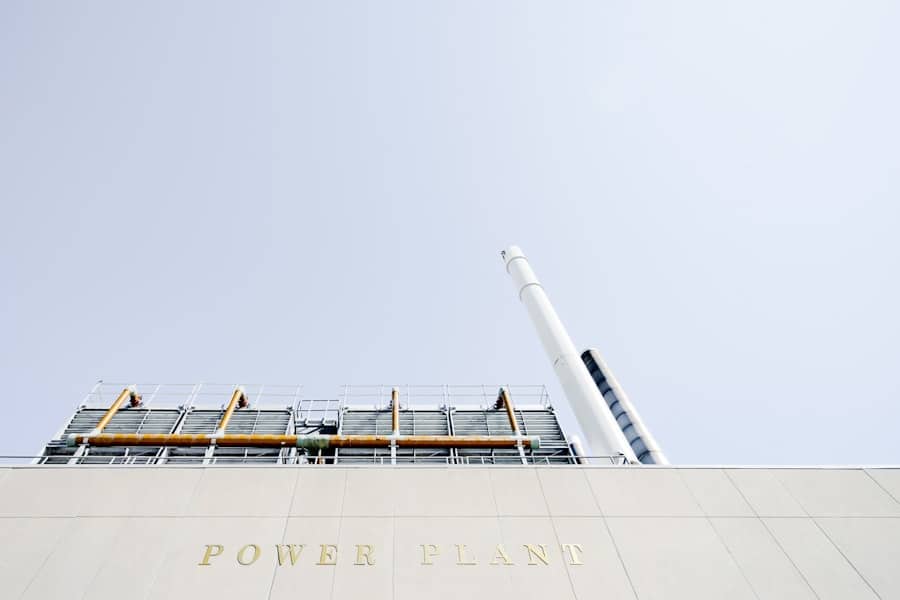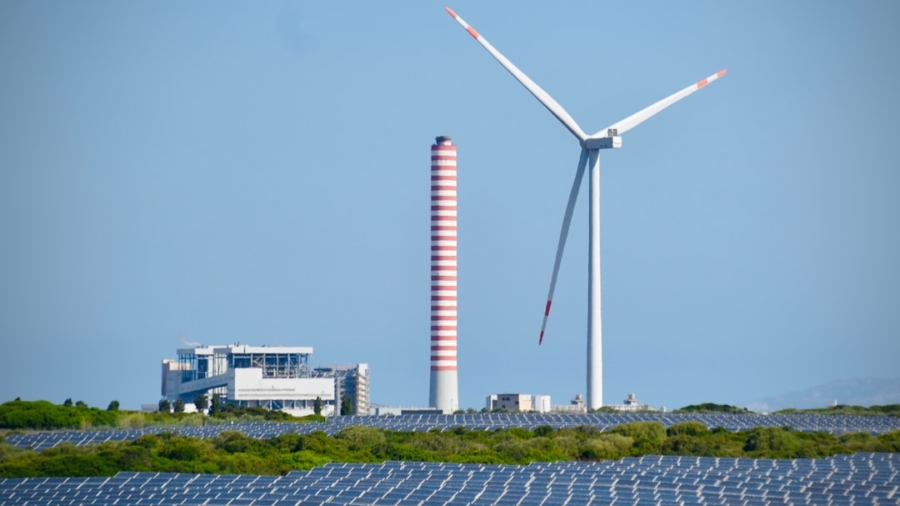The integration of artificial intelligence (AI) into renewable power plants marks a transformative shift in how energy is produced, managed, and consumed. As the world grapples with the pressing need to transition from fossil fuels to sustainable energy sources, AI emerges as a pivotal technology that enhances the efficiency, reliability, and sustainability of renewable energy systems. By leveraging vast amounts of data generated by various components of power plants, AI algorithms can analyze patterns, predict outcomes, and optimize operations in ways that were previously unimaginable.
This technological evolution not only supports the operational aspects of renewable energy generation but also plays a crucial role in addressing the challenges associated with energy storage, grid stability, and resource management. The deployment of AI in renewable power plants encompasses a wide range of applications, from monitoring equipment health to optimizing energy output. As renewable energy sources such as solar and wind become increasingly prevalent, the complexity of managing these resources grows.
AI technologies can process real-time data from sensors and IoT devices, enabling operators to make informed decisions that enhance performance and reduce downtime. Furthermore, the ability to predict maintenance needs and optimize energy production aligns with the broader goals of sustainability and cost-effectiveness, making AI an indispensable tool in the renewable energy sector.
Key Takeaways
- AI is revolutionizing renewable power plants by enabling advanced monitoring, predictive maintenance, and optimization of energy production.
- AI integration in resource management enhances efficiency and reduces operational costs in renewable power plants.
- AI contributes to enhanced safety and security in renewable power plants through advanced monitoring and threat detection systems.
- AI-driven decision making in renewable power plants leads to more informed and efficient operational strategies.
- AI in grid management and demand response enables better integration of renewable energy sources and more efficient energy distribution.
Monitoring and Predictive Maintenance with AI
One of the most significant applications of AI in renewable power plants is in the realm of monitoring and predictive maintenance. Traditional maintenance practices often rely on scheduled inspections or reactive measures following equipment failures. However, these approaches can lead to unnecessary downtime and increased operational costs.
AI-driven predictive maintenance shifts this paradigm by utilizing machine learning algorithms to analyze historical data and real-time sensor inputs. This allows for the identification of potential issues before they escalate into costly failures. For instance, in wind turbines, AI can monitor vibration patterns, temperature fluctuations, and other operational metrics to detect anomalies that may indicate wear or impending failure.
By employing predictive analytics, operators can schedule maintenance activities at optimal times, thereby minimizing disruptions to energy production. A case study involving a large wind farm in Texas demonstrated that implementing AI for predictive maintenance reduced unplanned outages by 30%, significantly enhancing overall efficiency. This proactive approach not only extends the lifespan of equipment but also contributes to a more reliable energy supply.
Optimization of Energy Production with AI

AI plays a crucial role in optimizing energy production across various renewable sources. In solar power plants, for example, machine learning algorithms can analyze weather forecasts, historical performance data, and real-time solar irradiance levels to adjust the operation of photovoltaic (PV) panels dynamically. By optimizing the angle of solar panels or managing the output of inverters based on predicted sunlight availability, operators can maximize energy capture throughout the day.
Similarly, in wind energy generation, AI can forecast wind patterns and adjust turbine settings accordingly. Advanced algorithms can analyze data from multiple sources, including meteorological stations and satellite imagery, to predict wind speeds and directions with remarkable accuracy. This capability allows for real-time adjustments to turbine operations, ensuring that they operate at peak efficiency even as conditions change.
A notable example is the use of AI by Ørsted, a leading offshore wind developer, which has implemented machine learning models to enhance energy forecasting accuracy by up to 20%. This improvement translates directly into increased energy production and revenue generation.
Integration of AI in Resource Management
Resource management is another critical area where AI demonstrates its value in renewable power plants. Effective management of resources such as water for hydropower generation or land for solar farms is essential for maximizing output while minimizing environmental impact. AI systems can analyze various factors, including resource availability, environmental conditions, and regulatory constraints, to optimize resource allocation.
In hydropower plants, for instance, AI can be employed to manage water flow based on real-time data about reservoir levels, rainfall forecasts, and electricity demand. By predicting water availability and adjusting turbine operations accordingly, operators can ensure that they generate electricity efficiently while preserving water resources for ecological balance. A study conducted on a hydropower facility in Norway revealed that integrating AI into resource management led to a 15% increase in energy production while maintaining compliance with environmental regulations.
Moreover, in solar energy projects, AI can assist in site selection by analyzing geographical data to identify optimal locations for new installations. By considering factors such as land use patterns, solar irradiance levels, and proximity to existing infrastructure, AI-driven tools can help developers make informed decisions that enhance project viability and sustainability.
Enhanced Safety and Security through AI
Safety and security are paramount concerns in renewable power plants, where equipment failure or external threats can have significant consequences. AI technologies contribute to enhanced safety protocols by enabling real-time monitoring and threat detection.
In addition to physical security measures, AI can also enhance operational safety by monitoring equipment health and performance metrics. By continuously analyzing data from sensors embedded in machinery, AI systems can detect early signs of malfunction or hazardous conditions. For instance, in geothermal power plants where high temperatures and pressures are involved, AI can monitor critical parameters such as temperature and pressure levels to prevent accidents or equipment damage.
A practical application of this technology is seen in offshore wind farms where harsh environmental conditions pose risks to both personnel and equipment. By utilizing drones equipped with AI-powered imaging systems for routine inspections, operators can assess the condition of turbines without exposing workers to dangerous conditions. This not only improves safety but also reduces inspection costs and downtime.
AI-Driven Decision Making in Renewable Power Plants

The decision-making processes within renewable power plants are increasingly being influenced by AI technologies that provide actionable insights based on data analysis. Operators are faced with numerous choices regarding energy production strategies, maintenance schedules, and resource allocation. AI systems can synthesize vast amounts of data from various sources—such as weather forecasts, market trends, and operational metrics—to support informed decision-making.
For example, during periods of fluctuating energy demand or variable weather conditions, AI algorithms can recommend adjustments to energy production levels or suggest when to store excess energy in batteries for later use. This capability is particularly valuable in balancing supply and demand within the grid while maximizing profitability for operators. A notable instance is seen in California’s solar market where AI-driven platforms have been employed to optimize energy dispatch based on real-time demand forecasts and pricing signals.
Furthermore, AI can facilitate scenario analysis by simulating different operational strategies under varying conditions. This allows decision-makers to evaluate potential outcomes before implementing changes on the ground. By providing a comprehensive view of possible scenarios and their implications, AI enhances strategic planning efforts within renewable power plants.
AI in Grid Management and Demand Response
The integration of renewable energy sources into existing power grids presents unique challenges related to grid stability and demand response. As more intermittent sources like wind and solar come online, maintaining a balanced grid becomes increasingly complex. AI technologies play a vital role in addressing these challenges by enabling smarter grid management practices.
AI algorithms can analyze real-time data from smart meters and grid sensors to predict electricity demand patterns accurately. This predictive capability allows grid operators to implement demand response strategies effectively—encouraging consumers to reduce or shift their electricity usage during peak periods. For instance, during high-demand events when grid stress is anticipated, utilities can send signals to smart appliances or electric vehicle chargers to temporarily reduce consumption or delay charging until demand subsides.
Machine learning models can identify potential issues such as voltage fluctuations or equipment failures before they escalate into widespread outages. A case study involving a utility company in Germany demonstrated that implementing AI-driven grid management solutions reduced outage response times by 40%, significantly improving service reliability for consumers.
Future Trends and Challenges in AI for Renewable Power Plants
As the adoption of AI technologies continues to grow within renewable power plants, several trends are emerging that will shape the future landscape of this sector. One notable trend is the increasing use of edge computing—processing data closer to where it is generated rather than relying solely on centralized cloud systems. This shift enables faster decision-making and reduces latency in critical applications such as real-time monitoring and control.
Another trend is the growing emphasis on explainable AI (XAI), which seeks to make AI decision-making processes more transparent and understandable for operators and stakeholders. As renewable energy systems become more complex, ensuring that operators can trust and comprehend AI recommendations will be essential for widespread adoption. However, challenges remain in fully realizing the potential of AI in renewable power plants.
Data privacy concerns must be addressed as more devices become interconnected within the Internet of Things (IoT). Additionally, there is a need for standardized protocols and frameworks that facilitate interoperability between different AI systems used across various renewable technologies. In conclusion, while the integration of AI into renewable power plants presents significant opportunities for enhancing efficiency and sustainability, it also requires careful consideration of ethical implications and regulatory frameworks to ensure responsible deployment.
As technology continues to evolve, collaboration among industry stakeholders will be crucial in navigating these challenges while harnessing the full potential of AI for a sustainable energy future.
In the rapidly evolving field of renewable energy, the integration of artificial intelligence (AI) is proving to be a game-changer, enhancing the efficiency and reliability of power plants. A related article that delves into the technological advancements in this domain is titled “Best Software for UX.” This article explores how user experience (UX) design software is crucial in developing intuitive interfaces for AI systems, which are increasingly being used to optimize operations in renewable power plants. By improving the usability of AI tools, these software solutions contribute to more effective monitoring and management of energy resources, ultimately leading to greater efficiency and sustainability in the energy sector.
FAQs
What is AI?
AI, or artificial intelligence, refers to the simulation of human intelligence in machines that are programmed to think and act like humans. This includes tasks such as learning, problem-solving, and decision-making.
How does AI improve efficiency in renewable power plants?
AI can improve efficiency in renewable power plants by optimizing operations, predicting equipment failures, and enhancing energy production. It can analyze large amounts of data to identify patterns and make real-time adjustments to maximize output and minimize downtime.
What are some specific ways AI is used in renewable power plants?
AI is used in renewable power plants for predictive maintenance, energy forecasting, grid optimization, and autonomous control systems. It can also be used to optimize the performance of solar panels, wind turbines, and other renewable energy technologies.
What are the benefits of using AI in renewable power plants?
The benefits of using AI in renewable power plants include increased energy production, reduced maintenance costs, improved reliability, and lower operational expenses. AI can also help renewable power plants integrate more seamlessly with the electrical grid and other energy systems.
Are there any challenges or limitations to using AI in renewable power plants?
Challenges and limitations to using AI in renewable power plants include the initial cost of implementation, the need for specialized expertise, and concerns about data privacy and security. Additionally, AI systems may require ongoing training and updates to remain effective.

